- Home
- Home Art Studio
What Every Artist Needs to Know: Setting Up Our Home Art Studio
When we start out painting, we may think - a home art studio? Why do we need a studio?
We don't all need a formal art studio, but we do need a special place to do our painting. Art is exciting and we are anxious to get started.
A dedicated space where our supplies are available, puts us into an artistic mindset whenever we go there. That makes it easier to get the creative juices flowing.
How artists set up their studios is as diverse as our imaginations. But the basic requirements remain the same.
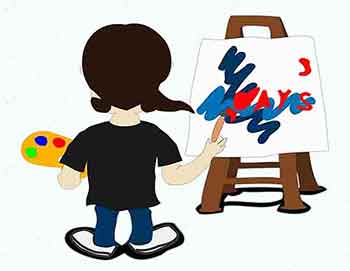 Our Painting Place
Our Painting Place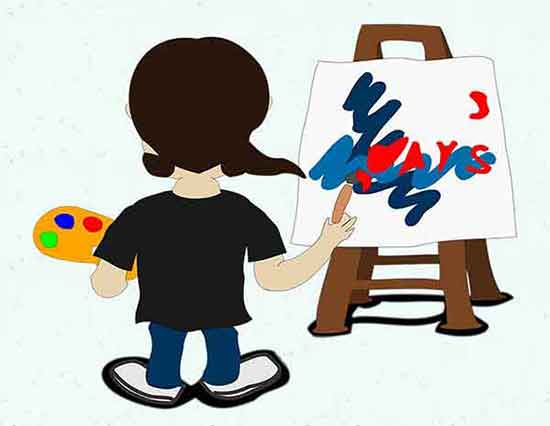 Our Painting Place
Our Painting PlaceWhat Do We Need in Our Home Art Studio?
The important items for our home art studio are space for everything with plenty of light and ventilation. We also need some furniture and to stay organized.
Let's answers the following questions:
How Much Space Do We Need in Our Art Studio?
We don’t need a big studio for creative painting. We just need enough room for us and our painting supplies.
A dedicated area makes our painting more convenient. Plus, when we have our own art space, we are likely to paint more often.
While visiting a fellow artist, I saw her art supplies out on the short part of her ell-shaped eating bar. That part of the bar was approximately 3 feet long. She told me that she paints there every evening.
It was amazing that she turns out so many lovely watercolor paintings from such a small space. She said she enjoys painting by the rest of the household, instead of being away in a separate room.
Where Can We Paint?
If there is an extra bedroom, a dining room, the attic, basement, garage or any other unused space, go for it. Even a walk-in closet will make a great home art studio.
We can paint on a desk, a fold-up table, a roll-away cart, an easel in the living room or even part of the eating bar like my friend does.
When my husband and I lived in a one-bedroom apartment there was no extra space for painting. So, when I had time, my portable easel got set up in the middle of the living room floor. It worked just fine. We use what space is available.
One time my high school counselor mentioned that she paints every evening. Looking around her living room, I asked her where she painted. She told me she paints in her basement. She said, she goes there in the evenings to paint and unwind from work.
Painting takes total concentration and gets our mind off of everything else. Relieving stress is one of the reasons we paint.
What Is The Best Light for Our Studio?
Good light and ventilation are imperative for our special painting place.
What is the best light for our art studio?
The ultimate light for an art studio is north light windows.
North light is constant throughout the day. It makes painting the colors and values easier because the light is not changing during the day.
Many of us don’t have the luxury of north light.
Even with north light windows, there is still a need for artificial lights
on overcast days or for painting at night.
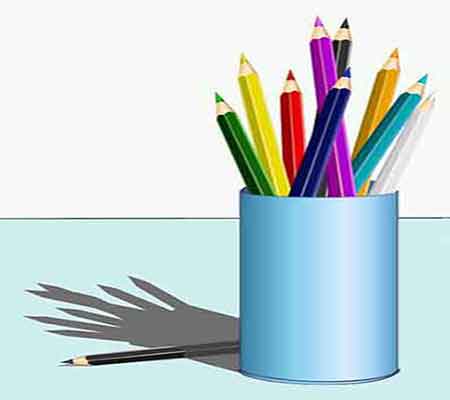 Good light makes painting fun!
Good light makes painting fun!What Are the Best Art Lights for Painting?
What Are the Best Art Lights for Painting?
Artificial lights for the home art studio should have a combination of warm and cool light rays.
Daylight bulbs provide the correct combination of light. They are the next best thing to painting in natural daylight.
Can't We Just Use Regular Light Bulbs for Painting?
Can't We Just Use Regular Light Bulbs for Painting?
Regular household bulbs provide only warm light rays. Their light is good for daily living, but not for the studio. When the finished paintings are viewed in natural daylight the colors will look dull.
Daylight bulbs have a balance of warm and cool light rays. They make our paintings look like we painted them in the natural light.
Where Can We Find Daylight Bulbs?
Where Can We Find Daylight Bulbs?
Daylight bulbs are available at local building supply outlets and many art stores.
Are Florescent Bulbs Good for Our Home Art Studio?
Are Florescent Bulbs Good for Our Home Art Studio?
Regular florescent bulbs are too cool for painting art. Their bluish light skews our color perception. The colors will look off when the painting is viewed in natural daylight.
However, "daylight" florescent light bulbs have the perfect light for painting in the studio.
Make Sure Your Art Area Has Adequate Ventilation.
Make Sure Your Art Area Has Adequate Ventilation.
A window is great for both light and ventilation. If there is no window available, a fan will keep the air moving and pleasant.
When I was living in Florida, we installed a range hood exhaust fan in the exterior wall of the studio. It could be switched on at painting time. It kept the air moving and exhausted it to the outside.
What Else Do We Need in Our Studio?
Light is essential for painting art, but what else do artists need in our home studio?
Certainly, we need a supply of paper, pencils, canvas, paints, brushes, cleaning supplies, etc. Whatever we use for our type of artwork.
Inspiration
We also need something to paint. What we have for painting inspiration depends on our subject. Different people use different things.
A still life artists may have a supply of vases, books, musical instruments, glass balls, artificial flowers, candy, dishes or teapots. The list is as endless, as the artist's imagination.
A western artists may have a saddle, halters or a bridle in the studio. Figure artists may have a small moveable figure.
Nature and landscape artists often work from photographs. Be aware of the copyright laws.
We should not copy a photo or painting of another artist. We may however use copyright free photographs. My favorite place is pixabay.com. A newer site is unsplash.com.
Furniture
We may either stand or sit to paint. Different people paint different ways. Most painting artists use an easel or a flat surface such as a table for painting.
Standing imparts a freedom
and vivaciousness to
our
paintings. Our arms and hands are both free for movement and expression.
Sometimes we have to sit, but that doesn't stop us from painting. Some artist even paint in their lap.
We may use a chair or stool while painting, resting or contemplating.
Something to Hold the Painting
What put the painting on depends on our painting medium. We may paint on an easel, table, counter or even a rolling cart.
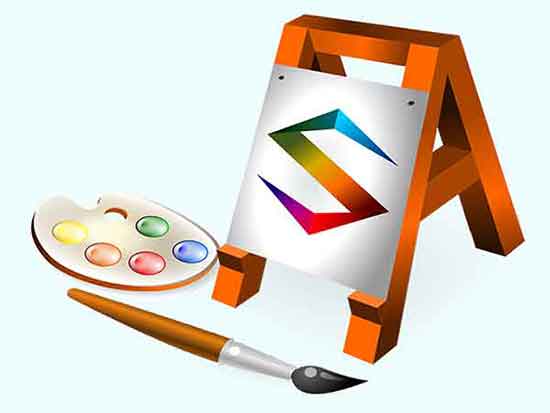 Painting is Super!
Painting is Super!Oils and acrylics are usually painted on an easel.
If we sit at a table to
paint, use a table easel. An upright painting gives a better view and
access for painting.
Watercolor paintings need to lay flat or only slightly tilted. We may use a desk, counter, table or a drafting table.
I use a drafting table for painting watercolors. I sit for smaller pieces and intricate detail. But I stand to paint and view large watercolor pieces.
Then I place a 2x4 wood block under the top edge of the painting. The block tilts the painting up for a better view and comfortable painting access.
Have a place for finished paintings. For example, a drawer for watercolors or a shelf for oils.
How Do We Keep Our Studio Organized?
We need to keep our painting supplies organized, handy and ready to use.
- Keep an adequate supply of materials. There is nothing worse than
running out of our favorite color in the middle of a painting. What paint colors should we have on hand?
- There are many innovative ways to store our paint supplies. We may use shelves, boxes, baskets, cans, vases or glasses.
- Even a fishing tackle box makes a good art box. That's what held my oil paints and brushes for years. Necessity makes us very inventive.
A clean organized space makes painting pleasant and more inspiring.
We probably have heard of writer’s block. There is also such a thing as an artist’s block. One of the ways to prevent a painting block is to keep our painting area organized.
Without any distractions, our creative juices can flow and painting is fun.
Our Home Art Studio Checklist
Once our painting area is set up we can paint anytime!
- Natural light or daylight bulbs
- Good ventilation
- Painting supplies
- Storage for supplies and finished paintings
- Things to paint, photos or objects
- Easel, counter or table
- A chair or stool
- Music
- Wastebasket
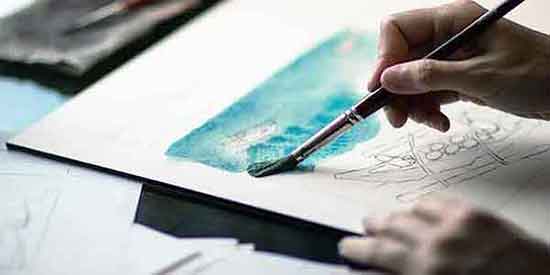 We need our own painting place
We need our own painting placeMake your art studio comfortable and convenient, so it's always ready for more awesome paintings.







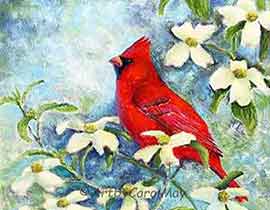 How do we create a focal point in art? Where do we put the focal point? How do we find the focus of an artwork? Should all paintings have a center of interest or can they have more than one? Learn fro…
How do we create a focal point in art? Where do we put the focal point? How do we find the focus of an artwork? Should all paintings have a center of interest or can they have more than one? Learn fro…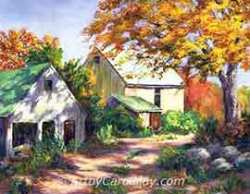 Art elements and principles appear over and over in good paintings. The elements and principles work together for us to create successful artwork. Art principles are the rules that govern how an artis…
Art elements and principles appear over and over in good paintings. The elements and principles work together for us to create successful artwork. Art principles are the rules that govern how an artis…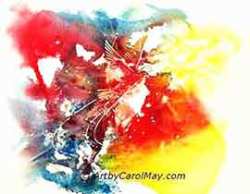 Artists often use the meaning of color to convey emotions, sentiments, and symbolism. Are you intrigued by the idea that colors can enhance or suppress different aspects of your paintings? Let's look…
Artists often use the meaning of color to convey emotions, sentiments, and symbolism. Are you intrigued by the idea that colors can enhance or suppress different aspects of your paintings? Let's look…